Best Personal Loans Online in Jan 2026 Overview
Struggling to find personal loans with bad credit? You’re not alone. This article will show you the best personal loans for bad credit in January 2026, along with tips on qualifying and comparing rates. Start here to find the right loan for your situation.
Key Takeaways
- Personal loans can be secured or unsecured, with secured loans typically offering lower interest rates due to collateral requirements.
- Several lenders, like OneMain Financial and Avant, cater to borrowers with bad credit, considering factors beyond credit scores for loan eligibility.
- To qualify for a personal loan with bad credit, improve your credit score, prequalify with multiple lenders, and consider using a co-signer or offering collateral.
Understanding Personal Loans
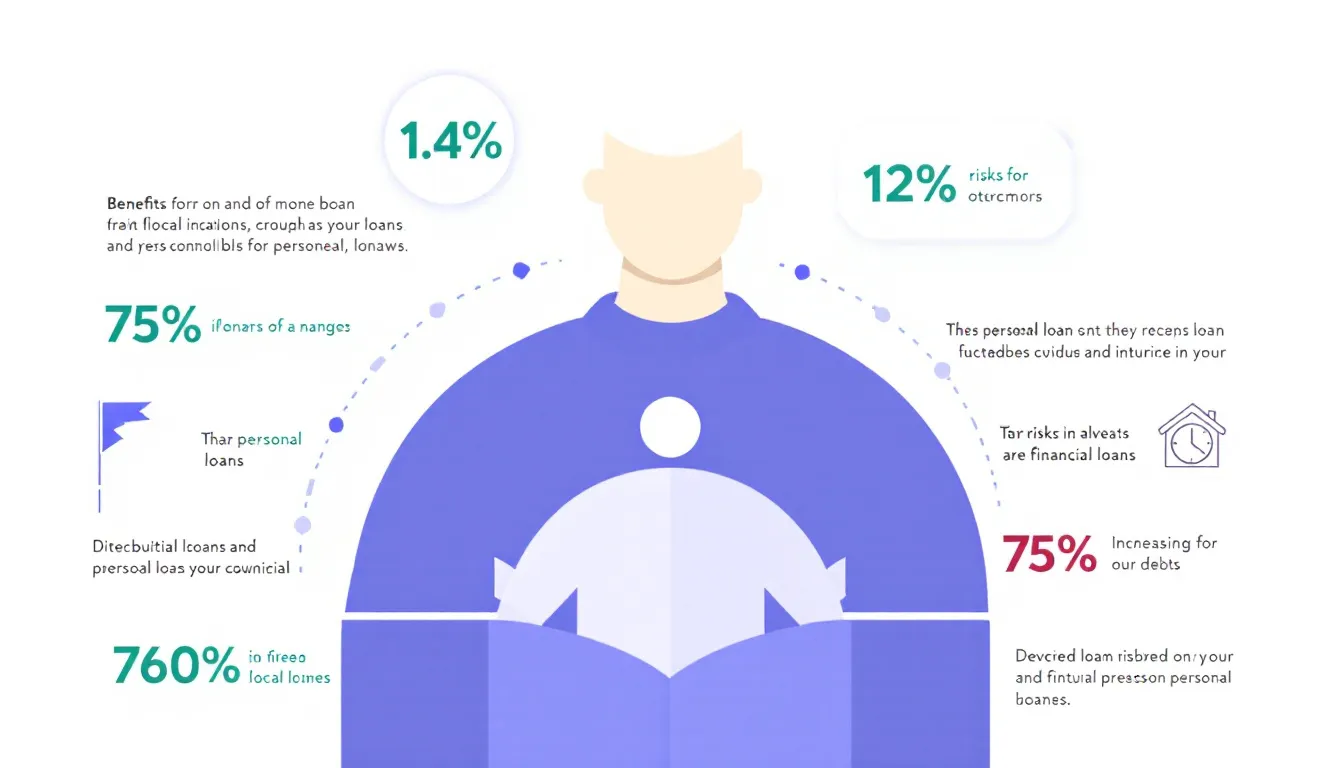
A personal loan allows individuals to borrow a sum of money for various purposes, which must be repaid over time with interest. Unlike other installment loans that are typically tied to specific purchases, personal loans offer flexibility in their use, making them suitable for a wide range of expenses. This versatility is a key reason why personal loans have become increasingly popular.
Personal loans can be either secured or unsecured. Secured personal loans require collateral—such as a car or savings account—which the lender can claim if the borrower defaults on the loan. On the other hand, an unsecured personal loan does not require collateral, making them more accessible but often at higher interest rates due to the increased risk for lenders.
The interest rates, fees, and repayment terms for personal loans can vary significantly among lenders. Comparing different offers helps you find the best terms that suit your financial situation. Personal loans can be sourced from banks, credit unions, and online lenders, each with its own set of advantages and drawbacks.
Understanding the loan terms, including the interest rate, repayment period, and any associated fees, is important when considering a personal loan. Using a personal loan calculator can help you estimate your monthly payments and the total cost of the loan over its lifetime. This knowledge will empower you to make informed decisions and choose the best loan for your needs.
Next, we will explore the best personal loans available for individuals with bad credit as of January 2026. These options can help you access the funds you need while managing your credit score responsibly.
Best Personal Loans for Bad Credit
Finding a personal loan with a bad credit score might seem daunting, but several lenders specialize in offering bad credit loans. As of January 2026, some of the best options available include OneMain Financial, Prosper, and Avant.
OneMain Financial is a popular choice for individuals with low credit scores. They offer personal loans with flexible terms and quick approval processes. Prosper, on the other hand, requires a minimum credit score of 560, making it accessible for those with slightly higher credit scores. Avant is another excellent option, catering to borrowers with a minimum credit score of 550.
These lenders understand that a bad credit score doesn’t necessarily reflect your current financial situation. They often consider other factors, such as your income and employment status, to determine your eligibility. This approach allows them to offer more inclusive loan options for borrowers with poor credit histories.
The average interest rate for personal loans as of January 2026 is 12.31 percent. However, rates for bad credit loans can vary significantly, ranging from 24 to 72 months. It’s vital to review the loan terms carefully, including any origination fees that can range from 0% to 7%.
In the following section, we’ll delve into the differences between secured and unsecured personal loans, helping you understand which type might be best suited for your needs.
Secured vs. Unsecured Personal Loans
Understanding the difference between secured and unsecured options is crucial when considering a personal loan. Secured loans are backed by collateral, such as a car or home, which reduces the lender’s risk and often results in lower interest rates. This can be particularly beneficial for borrowers with bad credit, as it may allow them to access larger loan amounts.
Conversely, an unsecured loan does not require collateral, making it more accessible to a broader range of borrowers. However, this increased accessibility comes at a cost—higher interest rates and stricter approval criteria, especially for those with bad credit. Despite these drawbacks, unsecured loans offer greater flexibility in how the funds can be used.
Secured loans’ lower interest rates and higher borrowing limits make them an attractive option for significant expenses or debt consolidation. However, the risk of losing collateral in case of default is a crucial consideration. Unsecured loans, while potentially more expensive, do not carry this risk, making them suitable for smaller, short-term financial needs.
Next, we will provide practical tips and strategies for qualifying for a personal loan with bad credit. This information will help you improve your chances of securing a loan that meets your financial needs.
How to Qualify for a Personal Loan with Bad Credit
Qualifying for a personal loan with bad credit may seem challenging, but it’s not impossible. The first step is to understand your credit score and obtain a credit report. Reviewing your credit report can help identify errors that may be negatively affecting your score. Correcting these errors can significantly improve your chances of loan approval.
Improving your credit score involves consistently paying bills on time and reducing outstanding debt. A low debt-to-income ratio (DTI) is also crucial; this ratio represents the percentage of your monthly income that goes towards debt payments. A lower DTI indicates better financial health, which can enhance your loan approval odds.
Prequalifying with multiple lenders allows you to view potential loan terms and rates without affecting your credit score. This process involves a soft credit pull, which does not impact your score and can give you a clearer picture of your loan options.
Including a co-signer can significantly improve your chances of getting approved for a loan. A co-signer provides additional security for the lender, potentially leading to better rates, higher loan amounts, and improved approval odds. Additionally, offering collateral can increase your approval chances compared to unsecured loans.
Next, we will discuss how to compare personal loan rates to find the best option that suits your financial situation.
Comparing Personal Loan Rates
Comparing personal loan rates is essential to find the best deal. The annual percentage rate (APR) is a key factor, as it reflects the total cost of the loan over a year, including both interest and fees. Understanding the APR allows you to compare different loan offers directly.
The average interest rate for a two-year personal loan is around 12.35%, but this can vary based on your creditworthiness. Borrowers with better credit scores typically receive lower interest rates, while those with poor credit might face higher rates. It’s vital to compare offers from multiple lenders to find the most favorable terms.
When reviewing loan offers, consider not only the interest rate but also any associated fees, such as origination fees and prepayment penalties. Using a personal loan calculator can help you estimate your monthly payments and the total cost of the loan over its term.
Next, we will explore the benefits of using personal loans for debt consolidation, a popular option for managing multiple debts effectively.
Benefits of Personal Loans for Debt Consolidation
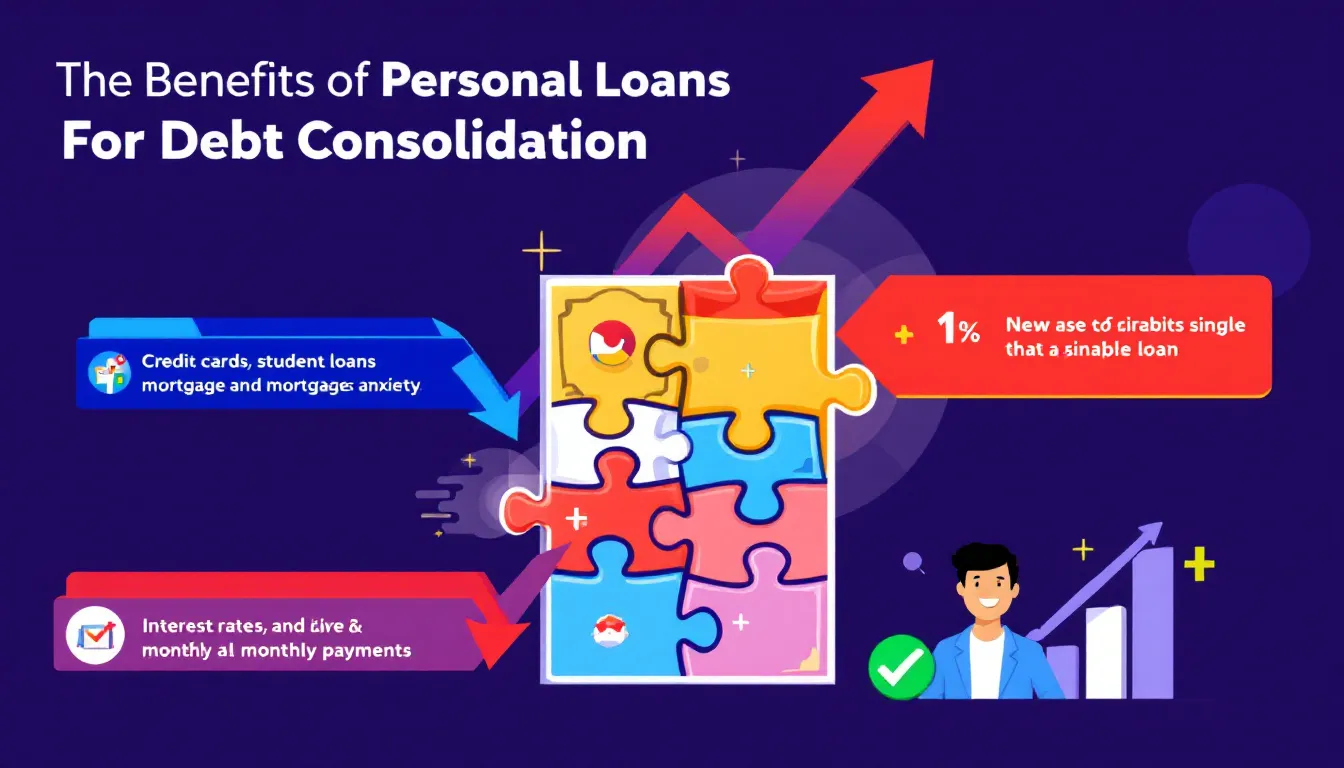
Debt consolidation loans can be a powerful tool for managing multiple debts. By consolidating your debts into a single loan with a lower interest rate, you can potentially speed up the debt payoff process. This approach simplifies your finances by merging multiple payments into one, making it easier to manage.
If your credit score has improved since taking out previous loans, a debt consolidation loan may offer a lower overall interest rate. This can reduce your monthly payments and save you money in the long run. Additionally, consolidating debts can help avoid late payments, which can further damage your credit score.
Next, we will discuss quick funding personal loans, which can provide fast access to funds for emergency expenses or other urgent financial needs.
Quick Funding Personal Loans
Quick funding personal loans can be a lifesaver in times of financial emergency. Many lenders offer personal loans that can be funded within one business day after approval, providing rapid access to needed funds. This quick funding can be particularly beneficial for covering emergency expenses, such as medical bills or urgent home repairs.
For instance, Avant and Upgrade both offer funding within one business day after loan approval. Best Egg typically funds loans within 1-3 business days, offering a slightly longer but still quick turnaround time. Some lenders even provide same-day funding if the application is approved and signed by a specific cutoff time.
Next, we will explore the pre-qualification process and its impact on your credit score to help you navigate this crucial step in securing a loan.
Pre-qualification and Credit Impact
The pre-qualification process is a valuable tool for borrowers, as it allows you to view potential loan terms and rates without impacting your credit score. During this process, a lender performs a soft credit pull, which does not affect your credit score. This can give you a clearer picture of your loan options and help you make an informed decision.
Once you decide to formally apply for a loan, a hard credit inquiry is conducted. This type of inquiry can lower your credit score slightly and remains on your credit report for up to two years. It’s important to be mindful of how many hard inquiries you have, as multiple inquiries in a short period can negatively impact your credit score.
Understanding the difference between soft and hard credit pulls can help you strategically approach the loan application process. By prequalifying with multiple lenders, you can compare offers without hurting your credit score.
Next, we will discuss personal loans tailored for specific needs, such as home improvement, medical expenses, and auto loans.
Personal Loans for Specific Needs
Personal loans can be tailored to meet specific needs, offering flexibility and targeted financial support. For example, LightStream offers personal loans ranging from $5,000 to $100,000 for various purposes, including home improvements and medical expenses, with no origination fees.
Home improvement loans can be unsecured personal loans, typically offering amounts between $1,000 and $100,000, depending on the project’s scale. These loans usually have fixed interest rates, resulting in consistent monthly payments over the loan term.
Medical expense loans are another category, covering various healthcare costs with repayment terms typically ranging from 12 months to 12 years. Auto loans, tailored for purchasing vehicles, often come with similar interest rates to other personal loans.
Next, we will explore common fees associated with personal loans to help you understand the potential costs involved.
Common Fees Associated with Personal Loans
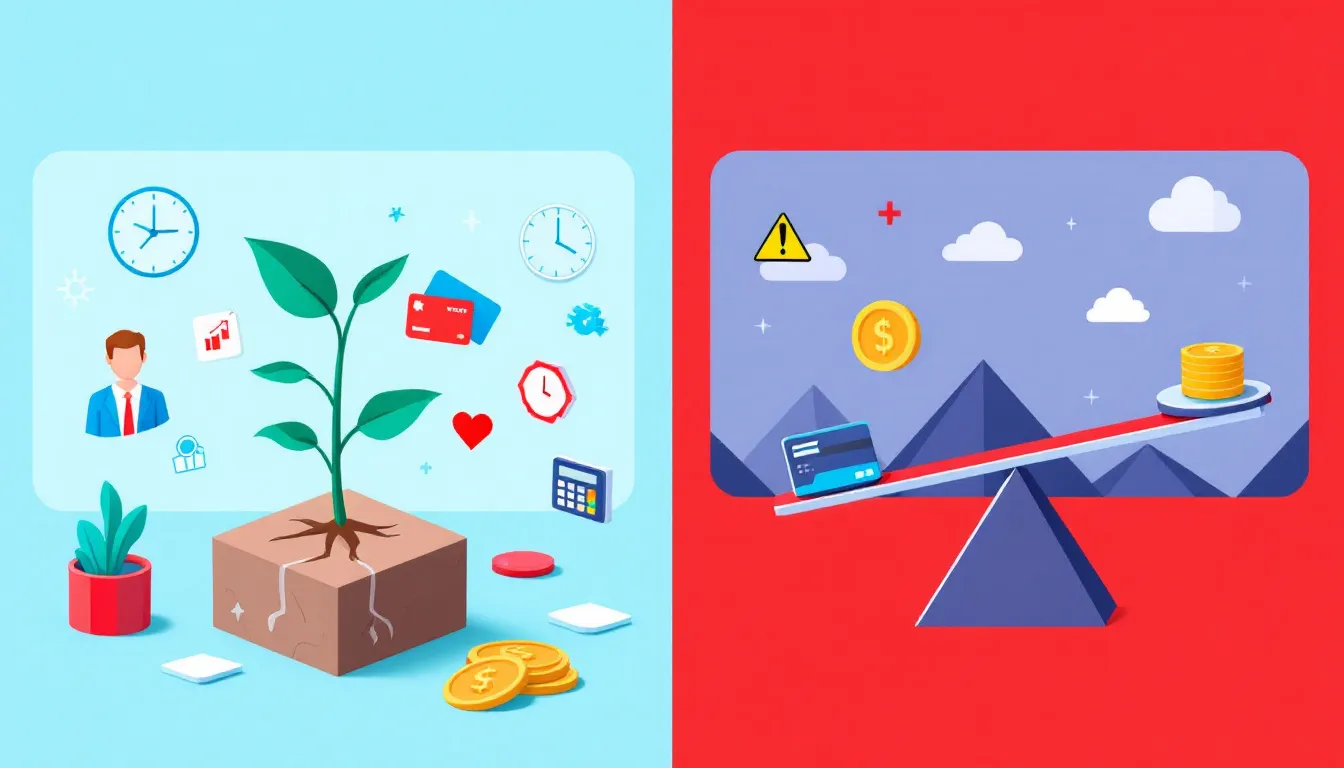
When taking out a personal loan, it’s essential to be aware of common fees that may apply. An origination fee, for example, can range from 1% to 10% of the loan amount, reducing the total funds you receive. Some lenders do not charge origination fees, which can lower the overall cost of borrowing.
Prepayment penalties are another potential fee to consider. These fees apply if you pay off your loan early, although not all lenders charge them. Late payments can also incur additional charges, typically the greater of 5% of the last amount due or $15. It’s crucial to review your loan agreement carefully to understand all the fees involved.
Next, we will discuss alternatives to personal loans for individuals with bad credit, providing additional options for those who might not qualify for traditional loans.
Alternatives to Personal Loans for Bad Credit
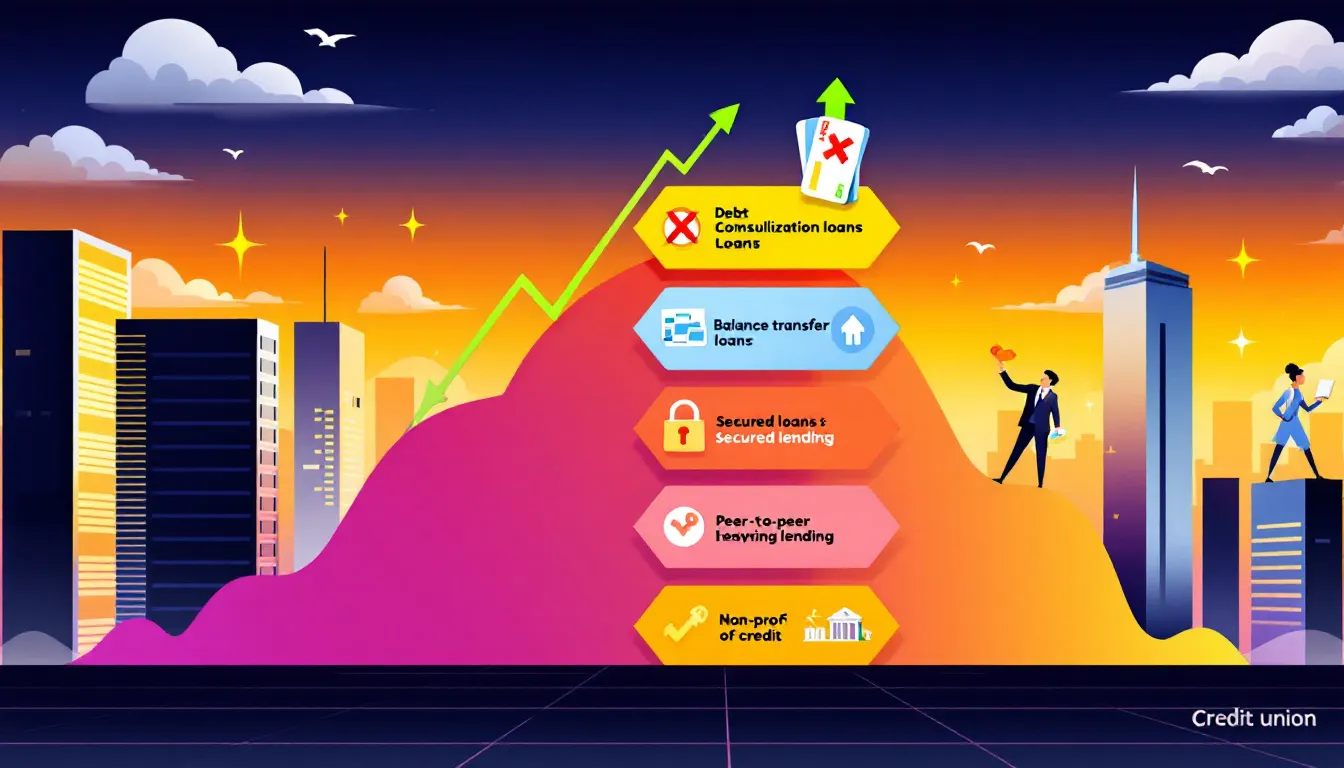
For individuals with bad credit, exploring alternatives to personal loans can be crucial to avoid high interest rates. A bad credit loan, such as a payday loan alternative, is one option, although they often carry high interest rates and should be approached with caution.
Borrowing from family or friends can be a viable route, but it’s essential to discuss interest, repayment terms, and payment frequency to avoid misunderstandings. Formalizing the details in a written agreement can provide clarity and prevent potential conflicts.
Local resources such as food pantries, religious organizations, and nonprofits can offer vital assistance for those facing financial hardship. These organizations can provide support and resources that may alleviate the need for a loan.
Next, we will offer tips for managing personal loan payments effectively to help you stay on top of your finances.
Tips for Managing Personal Loan Payments
Managing personal loan payments effectively is crucial to maintaining financial health. One strategy is to consolidate multiple debts into one loan, simplifying finances by reducing the number of payments and interest rates to manage. This approach can also decrease monthly payments by spreading repayments over a longer loan term.
Automating bill payments can help ensure timely payments and prevent late fees. Utilizing financial applications to provide reminders for upcoming payments can also assist in managing your loan effectively. Establishing a consistent schedule for paying bills can build a reliable habit, making it easier to stay on top of your finances.
Next, we will discuss how to spot personal loan scams to help you avoid falling victim to fraudulent schemes.
How to Spot Personal Loan Scams
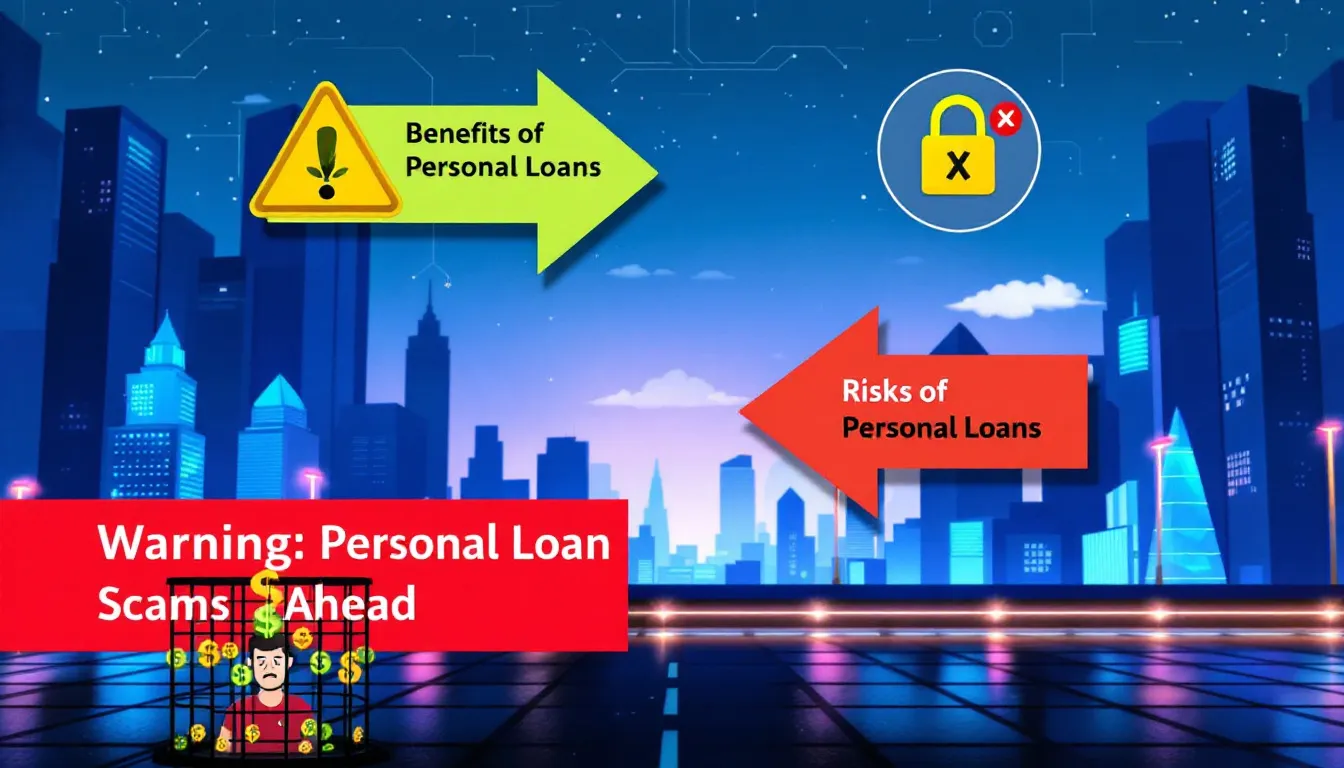
Spotting personal loan scams is critical to protect yourself from financial fraud. Scammers often avoid clearly disclosing fees, catching borrowers off guard once they think they are approved. Always ensure that all fees are transparently communicated upfront before proceeding with any loan agreement.
Legitimate lenders typically check a borrower’s payment history and credit score, while scammers may focus on high-risk borrowers who are more likely to face repayment difficulties. A credible lender must also register with states where they conduct business; a lack of registration can be a red flag indicating a potential scam.
Scammers may ask for a prepaid debit card for fees or collateral, which is a significant red flag since legitimate institutions deduct fees from the loan amount. Additionally, unsolicited loan offers received by phone, mail, or door-to-door solicitation are common tactics used by fraudsters.
No lender can guarantee loan approval without assessing your financial details, so promises of guaranteed approval often indicate a scam. If you suspect fraud, cease communication with the lender immediately and document any interactions for reporting to authorities. Sharing your experiences can also help raise awareness and protect others from similar situations.
Summary
Navigating the world of personal loans with bad credit can be challenging, but it’s not impossible. Understanding the different types of personal loans, comparing rates, and knowing how to qualify despite a bad credit score are crucial steps. By taking advantage of pre-qualification and being aware of potential scams, you can make informed decisions that benefit your financial health.
Remember, personal loans can be a powerful tool for debt consolidation, emergency expenses, and more. With the right knowledge and careful planning, you can manage your loan payments effectively and improve your financial situation. Keep these insights in mind as you explore your options and take control of your financial future.
Frequently Asked Questions
What is the difference between a secured and an unsecured personal loan?
The key difference is that a secured personal loan requires collateral, which lowers the lender’s risk and often results in lower interest rates, while an unsecured personal loan does not require collateral, leading to higher interest rates and stricter approval criteria.
How can I improve my chances of qualifying for a personal loan with bad credit?
To improve your chances of qualifying for a personal loan with bad credit, focus on paying bills on time, reducing outstanding debt, and checking your credit report for errors. Additionally, consider prequalifying with multiple lenders and exploring options like a co-signer or collateral.
What are some common fees associated with personal loans?
Common fees associated with personal loans include origination fees (1% to 10% of the loan amount), prepayment penalties for early repayment, and late payment fees. It’s essential to review these fees to understand the total cost of the loan.
How can personal loans be used for debt consolidation?
Using a personal loan for debt consolidation can streamline your finances by consolidating multiple debts into one payment, often with a lower interest rate. This approach not only simplifies your repayment process but can also save you money if your credit score has improved.
How can I spot a personal loan scam?
To spot a personal loan scam, look for signs such as undisclosed fees, requests for prepaid debit cards, unsolicited offers, and promises of guaranteed approval without proper assessment. Always verify the lender’s credentials and report any suspicious activities.